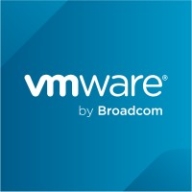


Microsoft Configuration Manager and Spring Cloud cater to IT management needs but in distinct ways. Microsoft Configuration Manager holds the advantage for on-premises IT management due to its asset and patch management strengths, while Spring Cloud's cloud-native features make it superior for cloud application scalability.
Features: Microsoft Configuration Manager is appreciated for integrated asset management, comprehensive reporting, and deployment capabilities, crucial for large-scale IT operations. Spring Cloud provides service discovery, load balancing, and centralized configuration, which are key for cloud-native development and modern applications.
Ease of Deployment and Customer Service: Microsoft Configuration Manager offers a well-known setup model that simplifies on-premises deployments and maintenance alongside centralized customer service. Spring Cloud requires a higher learning curve due to its advanced cloud strategies but benefits from cloud automation and integration.
Pricing and ROI: Microsoft Configuration Manager generally has a straightforward pricing model suitable for enterprise IT budgets. Spring Cloud might require a higher initial investment but offers significant returns through enhanced cloud efficiencies and scalability.
| Product | Market Share (%) |
|---|---|
| Microsoft Intune | 8.2% |
| Microsoft Configuration Manager | 10.4% |
| Spring Cloud | 1.7% |
| Other | 79.7% |



| Company Size | Count |
|---|---|
| Small Business | 119 |
| Midsize Enterprise | 47 |
| Large Enterprise | 153 |
| Company Size | Count |
|---|---|
| Small Business | 20 |
| Midsize Enterprise | 13 |
| Large Enterprise | 64 |
Microsoft Intune provides centralized management of mobile devices and applications, ensuring security, compliance, and productivity through integration with Microsoft services like Microsoft 365 and Azure Active Directory.
Organizations use Intune for managing mobile devices and applications, enhancing security and compliance across platforms. With features like single sign-on, conditional access, and zero-touch deployment via Autopilot, it facilitates efficient operations. Intune's scalability, easy enrollment, and capabilities such as remote wipe support diverse device management, offering robust data protection and efficient operation. Despite its features, improvement areas include reporting, compatibility with non-Microsoft devices, and better support for macOS and Linux devices.
What are the key features of Microsoft Intune?
What benefits should users look for in reviews?
In industries such as finance, healthcare, and education, Microsoft Intune is implemented to ensure secure and compliant device management. Companies leverage its capabilities to deploy security policies and manage both corporate-owned and BYOD environments, facilitating a unified approach to data protection and compliance.
Microsoft Configuration Manager streamlines IT management with features such as software deployment, patch management, and automation, centralizing operations for Windows environments. Integration with Microsoft products allows efficient oversight of workstations and servers.
Microsoft Configuration Manager provides comprehensive IT management, offering software deployment, patch management, and application pushing. Automation reduces manual tasks, ensuring consistency across systems. Centralized management enables standardized OS deployments, application updates, and configuration integrity. Integration with Microsoft products facilitates seamless operations, while hardware and software inventory, compliance reporting, and remote control functions enhance IT management. Users seek improvements in application deployment for those without deep scripting knowledge and desire better WSUS control, PowerShell and Intune integration, Linux compatibility, and user interface enhancements. Performance improvements are requested for remote user management and third-party application support.
What features enhance Microsoft Configuration Manager?Microsoft Configuration Manager is widely implemented in organizations to manage Windows workstations and servers. It is essential for deploying operating systems and applications, managing software updates, and conducting hardware and software inventories. The tool is crucial for endpoint and configuration management, ensuring compliance, and automating processes like patching and vulnerability management. Industries such as finance, healthcare, and education rely on Microsoft Configuration Manager to keep systems secure and operational, adapting it to address their specific needs and challenges in maintaining diversified IT environments.
Spring Cloud simplifies distributed, microservice-style architecture by implementing proven patterns to bring resilience, reliability, and coordination to your microservices. Using Spring Cloud Services, Pivotal Cloud Foundry customers have a turnkey, secure solution for production operations of this coordination infrastructure - service registry, config server, and circuit breaker dashboard.
We monitor all Configuration Management reviews to prevent fraudulent reviews and keep review quality high. We do not post reviews by company employees or direct competitors. We validate each review for authenticity via cross-reference with LinkedIn, and personal follow-up with the reviewer when necessary.